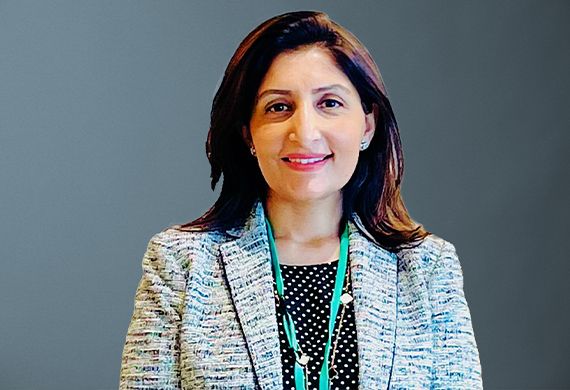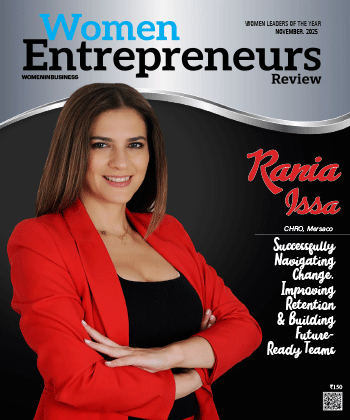
Project Management Evolution in APAC Driven by Technology & Sustainability
By: Puja Dattatraya, Sr. Executive Director, Turner & Townsend
With over 24 years of global experience across India and the US, Puja Dattatraya specializes in project management, client relationships, and business development. She brings strong leadership, design expertise, and a passion for advancing diversity, equity, and inclusion in the industry.
In a thought-provoking interaction with Women Entrepreneurs Review Magazine, Puja shares her insights on the evolving role of project management in APAC, the unique impact of women leaders on sustainable design, and an empowering message for aspiring women driving change in construction and tech.
In today’s rapidly evolving construction and tech landscape, how do you see Project Management adapting to emerging challenges and opportunities, especially in APAC?
Project management (PM) in Asia-Pacific (APAC) is undergoing significant transformation due to a combination of evolving construction practices, rapid technological advancement, and regional dynamics. This shift is driven by digital transformation and technology integration, which is uneven across countries and firms (e.g., more advanced in Singapore or South Korea vs. parts of Southeast Asia) and requires reskilling and upskilling of the workforce. Sustainability and ESG pledges by organizations require rapid implementation while managing costs and alignment to varying environmental regulations across APAC countries. Ongoing talent shortage with digital and regional expertise and migration from countries like, Philippines, Malaysia, and Thailand, and unpredictable supply chains owing to a volatile geopolitical environment are leading to thinking innovatively to overcome these challenges.
Therefore, project management is moving toward a more digital, agile, and sustainability-focused model. It is transitioning to AI and Data Analytics for predictive project planning, resource optimization, and risk mitigation. It's also integrating advanced technologies like Building Information Modeling (BIM) for better collaboration, clash detection, and lifecycle management. Drones, IoT, & Wearables are improving site monitoring, safety compliance, and progress tracking in real time.
To handle dynamic needs, agile and hybrid project management approaches are becoming standard, strengthening their focus on managing risks, particularly those related to supply chains, while also promoting seamless teamwork among various parties through the adoption of remote project management tools and leveraging cross-disciplinary skills.
In summary, by embracing emerging technologies, understanding local and regional nuances, and building resilient, adaptive teams capable of delivering across borders and disciplines, PM is transforming the Real Estate industry for efficiently delivering complex projects in a competitive and rapidly evolving market.
With sustainability becoming a core value, how can women leaders uniquely influence the integration of green certifications and sustainable design in large-scale projects?
Women at the helm of large-scale projects bring a unique power to embedding green certifications and sustainable design. Often, their leadership style is more holistic and centered around stakeholders, drawing on a broader range of voices. This ensures that sustainable designs aren't only beneficial for the environment but also fair to society, aligning perfectly with broader ESG (Environmental, Social, and Governance) objectives.
They tend to offer a sense of risk management and a longer-term vision, which is valuable when navigating the intricate challenges of sustainable construction. This foresight helps drive a lifecycle approach to design. Beyond that, these leaders frequently spark innovation and creative problem-solving, pushing against traditional methods to champion new green technologies. Their knack for strong communication and advocacy is also crucial; it builds consensus and clearly articulates the actual value of sustainable choices to everyone involved. Last, but not least, they often prioritize social sustainability and the well-being of future occupants, making sure projects foster healthy, integrated communities right alongside their environmental benefits. This combined influence leads to far more thorough and impactful sustainable outcomes.
Given the traditionally male-dominated construction industry, what innovative strategies can women employ to reshape leadership norms and foster inclusive project management cultures?
Women leaders have a unique opportunity to challenge legacy norms and foster more inclusive, collaborative project management cultures. One powerful strategy is to lead by example—demonstrating inclusive leadership styles that prioritize empathy, active listening, and diverse team engagement. Women can champion mentorship and sponsorship programs to support other women and underrepresented groups in rising through the ranks, helping to build a more balanced leadership pipeline. They can also leverage data to highlight the positive impact of diverse teams on project performance, innovation, and risk management, strengthening the business case for inclusion.
Adopting and advocating for flexible work policies, transparent communication frameworks, and participatory decision-making can also reshape team dynamics and dismantle hierarchical barriers. Additionally, women can drive cultural transformation by embedding inclusivity into project governance—ensuring that stakeholder voices, regardless of gender or background, are heard and valued throughout the project lifecycle.
In managing cross-cultural teams across Asia Pacific, what unique leadership approaches have you found effective in empowering diverse women professionals within Enterprise Project Management?
Managing cross-cultural teams across the Asia Pacific region requires a nuanced and empathetic leadership approach, particularly when it comes to empowering diverse women professionals within Enterprise Project Management (EPM). One effective strategy is to foster a culture of inclusion that actively recognizes and respects cultural and socio-economic differences. This means creating spaces where women from varied backgrounds feel heard, valued, and supported, whether in decision-making forums, project planning sessions, or leadership development opportunities. Establishing mentorship networks across geographies has also proven impactful, helping women professionals gain visibility, share experiences, and navigate region-specific challenges.
Another key approach is adopting flexible leadership styles that balance global standards with local sensibilities. Additionally, promoting transparency, psychological safety, and regular feedback loops helps women professionals gain confidence and grow into leadership roles within EPM environments. By championing equity-focused policies and role-modeling inclusive behaviours, leaders can build empowered, high-performing teams that truly reflect the diversity and strength of the workforce.
What empowering message would you share with aspiring women leaders aiming to break barriers and lead transformational change in the project management and construction sectors?
To aspiring women leaders aiming to break barriers and lead transformational change in project management and the construction sectors, my message is: believe in the value of your perspective and don’t hesitate to lead with authenticity. The industry is evolving, and with that comes an urgent need for diverse leadership and voices that challenge the status quo and bring empathy, collaboration, and innovation to the forefront. You may often find yourself in rooms where you are the only woman, but remember that presence is powerful. Use it to question norms, build inclusive teams, and drive sustainable, future-oriented solutions. Seek mentors, uplift others, and most importantly, never let silence your ideas.
Leadership is not about fitting in; it’s about standing out and creating space for others to do the same. The path may not always be easy, but it is necessary, and your leadership can be the change that reshapes the industry for generations to come.
Most Viewed
- 1 Women's Health Startup HerMD Closing Doors Amid Industry Challenges
- 2 5 Famous Women in Indian Armed Forces
- 3 Saudi Women No longer Require Male Permission for Clothing Choices, says Prince MbS
- 4 Kolkata Medtech Startup Innovodigm Raises Rs 5.5 Crore Seed Funding Led by IAN Group
- 5 Yamunanagar's Kashish Kalra Honoured after Securing 111th Rank in UPSC Civil Services Exam
- 6 Madurai Appoints Its First Woman Corporation Head
- 7 IAS Vijayalakshmi Bidari Appointed as the new Nagpur Divisional Commissioner
- 8 American Entrepreneur Lucy Guo Overtakes T Swift to become Youngest Female Billionaire
- 9 ICC Women's World Cup 2025 Trophy Showcased at Indore's Holkar Stadium
- 10 Aparna Saxena's Beauty Venture AntiNorm Launches in India
- 11 Vidya Nataraj Co-Founded BlueStone Jewellery & Lifestyle files IPO
- 12 5 Women Freedom Fighters of India
- 13 Dr. G Krishnapriya appointed as CEO for Trichy
- 14 M3M & Sirona Partner to Introduce Menstrual Hygiene Vending Machines in 15 Locations
- 15 Punjab Govt launches SHE Cohort 3.0 Supporting Tech-led Women Startups
- 16 Indian origin Lawyer, Sweena Pannu appointed as the US New Superior Court Judge
- 17 The Aurora Tech Award recognizes 4 Indian Women-led Startups
- 18 Kerala's Republic Day parade featured an all-female tableau
- 19 Manisha Kabbur Becomes Karnataka's First Woman International Karate Coach
- 20 Director K. S. Ravikumar's Daughter Maalica Ravikumar Launches Life Coaching Company 'Evergrowth Academy' for Women
- 21 Leezu's Raises Pre-Seed Funding to Accelerate Growth in Sexual Wellness Industry
- 22 Sattu: Super-easy summer drink for PCOS gut healing
- 23 Swathi Nelabhatla creates Sitha App, India's First Women-Exclusive Gig Platform
- 24 7 Timeless Female Kathak Dancers & their Iconic Legacies
- 25 Meet 7 Iconic Women Architects of Modern India & their Most Impactful Work
- 26 This Woman-led Insuretech Startup is Helping Bridge the Education Financing Gap in India
- 27 Women Leaders Share Lessons Learnt from India Women's WC Win
- 28 5 Enterprising Women Founders Powering Singapore's Tech & Innovation Landscape
- 29 4 Women. 4 Stories. One Vision for Smarter, Stronger Healthcare
- 30 Global Gender Gap Narrows to 68.8%, But Full Equality 123 Years Away: WEF Report 2025
- 31 Changemakers: 7 Women Entrepreneurs Taking the Make in India Movement Forward
- 32 Meet Lucy Guo, The Youngest Self-Made Female Billionaire Disrupting Tech
- 33 How Women are Driving India's Festive Online Shopping Surge






